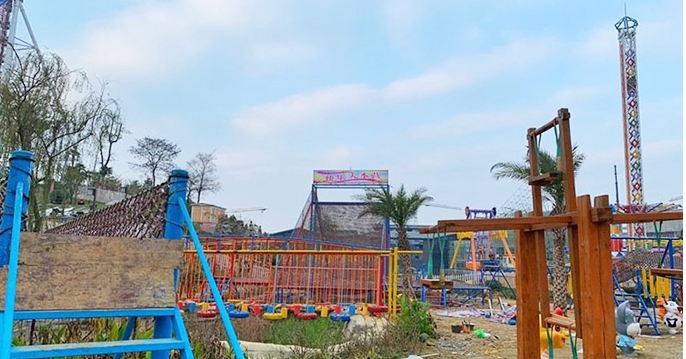- Albanian
- Arabic
- Belarusian
- Bengali
- Czech
- English
- French
- German
- Hebrew
- Hungarian
- Indonesian
- irish
- Italian
- Japanese
- kazakh
- Persian
- Russian
- Thai
- Uzbek
- Vietnamese
Exploring Different Types of Roller Coasters and Their Thrilling Unique Features and Experiences
Exploring Roller Coaster Types A Thrilling Journey
Roller coasters are one of the most exciting attractions found in amusement parks around the world. They combine speed, elevation, and intricate designs to create unique experiences that thrill riders of all ages. Understanding the various types of roller coasters can enhance one’s appreciation for these engineering marvels and the intense sensations they provide. In this article, we explore several popular roller coaster types and the exhilarating experiences they offer.
1. Wooden Roller Coasters
Wooden roller coasters are iconic in the amusement industry, with their nostalgic charm and classic design. Built primarily from wooden beams, these coasters deliver a distinct ride experience characterized by their smooth drops, sharp turns, and the occasional rattle. The oldest wooden coasters date back to the late 19th century, like the famed Coney Island Cyclone. Wooden coasters often evoke a sense of tradition and nostalgia, appealing to riders who appreciate the heritage of amusement parks.
Steel roller coasters revolutionized the amusement park experience in the late 20th century. Offering smoother rides, greater height, and faster speeds, steel coasters can perform intricate loops and inversions that wooden coasters struggle to achieve. Popular models, such as the inverted coaster, feature seats positioned below the track, providing riders with a sense of flying through the air. Steel coasters like “Millennium Force” at Cedar Point have set numerous records for height and speed, making them a must-ride for thrill-seekers.
3. Inverted Roller Coasters
rollercoaster types

Inverted roller coasters flip the traditional design on its head — literally. Riders sit beneath the track, suspended in a way that allows them to experience thrilling inversions like loops and corkscrews. This type of coaster enhances the sensation of weightlessness and freedom, as riders dangle with their legs dangling below. Some renowned inverted coasters, like “Banshee” at Kings Island, offer numerous loops and twists, making for an exhilarating ride full of surprises.
4. Launch Coasters
Unlike traditional roller coasters that utilize a lift hill to gain initial speed, launch coasters propel riders from a standstill to high speeds in mere seconds. Utilizing magnetic propulsion or hydraulic systems, these coasters provide a rapid and intense start, catching riders off guard with an adrenaline rush. “Top Thrill Dragster” at Cedar Point exemplifies this thrilling type, launching riders from 0 to 120 mph in just 3.8 seconds, followed by a steep vertical drop.
5. Floorless Roller Coasters
Floorless roller coasters take the excitement to another level by removing the floor from the ride vehicle. This design gives riders an exhilarating feeling of being suspended in mid-air as they navigate steep drops and tight turns. The lack of a floor amplifies the thrill factor and enhances the sensation of speed. Coasters like “Kraken” at SeaWorld Orlando exemplify this design, providing riders with breathtaking views and adrenaline-pumping moments.
Conclusion
Roller coasters come in various forms, each offering unique thrills and experiences. From traditional wooden coasters that evoke nostalgia to high-speed steel coasters that defy gravity, the diversity of roller coaster types ensures that there is something for everyone. Whether you seek the heart-pounding thrill of a launch coaster or the classic charm of a wooden coaster, the world of roller coasters is filled with exhilarating adventures waiting to be experienced. So, the next time you visit an amusement park, take a moment to appreciate the engineering and design behind these thrilling rides, and don’t hesitate to conquer your fears and embrace the rush!
-
Flume Ride-Hebei Zhipao Amusement Equipment Manufacturing Co., Ltd.|Thrilling Water Attraction&Customizable DesignJul.30,2025
-
Flume Ride - Hebei Zhipao Amusement Equipment | Water Coaster, Thrilling DescentJul.30,2025
-
Flume Ride - Hebei Zhipao | Thrilling Water AttractionJul.30,2025
-
Flume Ride: Thrilling Water Attraction by Hebei Zhipao|Log Flume Manufacturers&Flume Ride DesignJul.30,2025
-
Flume Ride-Hebei Zhipao Amusement Equipment Manufacturing Co., Ltd.|Thrilling Water Coaster, Safe DesignJul.30,2025
-
Flume Ride-Hebei Zhipao Amusement Equipment Manufacturing Co., Ltd.|Thrilling Water Attraction, Safe DesignJul.30,2025
